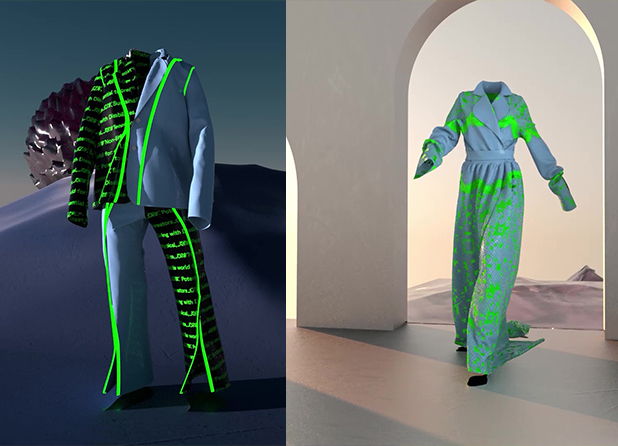Opinion – Digital Fashion: How Far is Too Far?
November 30, 2022
From liquid-like ball gowns to futuristic leotards, digital fashion caught the eye of people all around the world. Digital garments are clothing representations generated by 3D technology, often using artificial intelligence. However, unlike real-world shopping, this clothing is immaterial, but still costs actual dollars. This “new form of self-expression” is causing people to spend thousands on attire that is not real. Now, we must consider the question: what are our technological limits?
Digital fashion debuted in 2018 and has gained much public attention since then. It is no question that digital fashion has been manufactured to cater to the younger generation, meaning that the success rate is significantly higher. Globally, people seem ready to embrace the idea of digital fashion. According to a report from BoF Insights in 2019, 70% of people in the US rate their digital identity as critical, and 50% of people are interested in purchasing a digital asset in the next 12 months.
Gala Marija Vrbanic founded Tribute Brand in 2020, which debuted digital outfits of her design. “Digital fashion is not an alternative but an evolutionary step,” Vrabanic says in an interview with TED, “And we are currently at the beginning of this new era.” Not only has digital fashion flourished within smaller communities, but it is also obtaining recognition from larger retail companies. Businesses such as H&M have decided to incorporate digital fashion into their brands. It is becoming evident that digital fashion is on the rise.
Some argue that digital fashion is not exceeding any technological limit. Advancements in technology should be encouraged. Without it, where would we be today? We would not have access to the Internet, for example, if everyone renounced principal development.
Yes, there is no denying that this is a technological advancement, but it is not providing value. Clothing is produced to be worn with purpose and to elevate confidence. Fashion designers spend their entire careers dedicated to curating unique and inventive clothing. Seamstresses hand-make clothing with intent and care. People purchase clothing to create a widened sense of self-identity. Digital fashion steals from this. Now, it has solely become about looks. These outfits with physically-impossible appearances generate public interest – ballgowns of butterflies and laser beam leotards are easy images to capture society’s attention. However, these companies only feed into this cycle of abuse. How long will it take for this magical effect of these clothing pieces to disintegrate? How long will it take until people are no longer satisfied? Generally, progressiveness should be encouraged. But it is never effective to any extreme.
I have encountered digital fashion firsthand through Instagram. Digital companies such as DRESS-X operate by purchasing the computerized outfit and uploading a post to social media. Both digital fashion and social media work hand in hand, as they both benefit from one another.
Digital fashion seems to be spreading exponentially. Coaxing the younger generation into spending millions of dollars on non-physical garments simply because they are “tech savvy” is dangerous. Not only is it a waste of money, but it is also ignorant.
We cannot allow digital fashion to reign over the industry. Non-existent clothing cannot dictate consumers’ fashion choices. Our self-expression through fashion is at risk.










